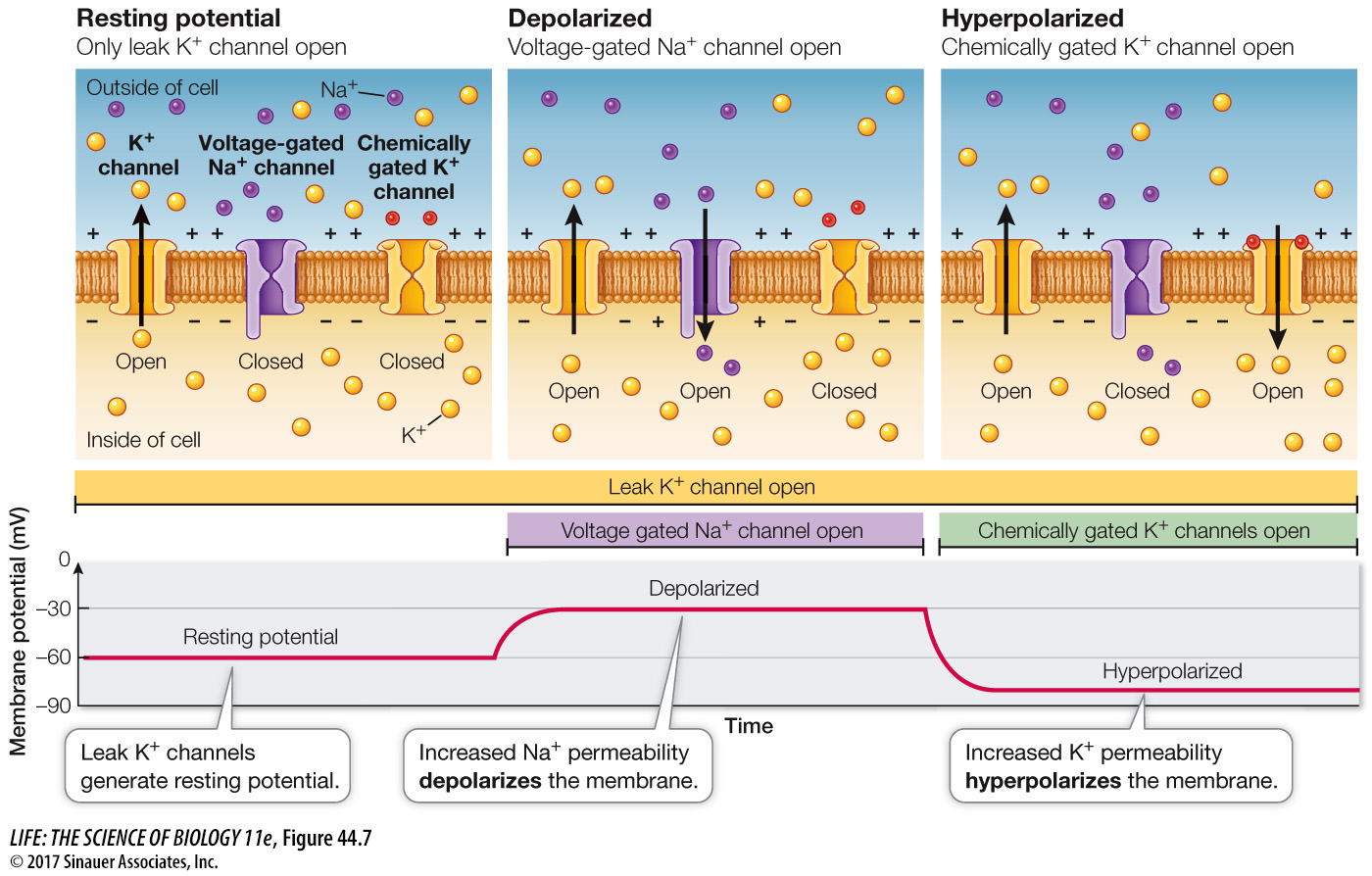Gated ion channels alter membrane potential
944
The ion channels called leak channels are always open, but other ion channels in the cell membranes of neurons behave as if they contain “gates”; they are open under some conditions and closed under other conditions. Voltage-
Openings and closings of gated channels alter the membrane potential. Above, you considered what would happen if the permeability of the membrane to Na+ suddenly increased. Such a change in local membrane permeability is generated by the opening of Na+ channels. Na+ ions would move down their electrochemical gradient until the membrane approaches the equilibrium potential for Na+ (ENa). Therefore, the inside of the cell becomes less negative. When the inside of a neuron becomes less negative (or more positive) in comparison to its resting condition, its cell membrane is depolarized (Figure 44.7). The opposite change in the membrane potential occurs if gated K+ channels open. Opening of these channels increases the permeability of the cell membrane to K+, and the membrane potential becomes even more negative than when only the leak K+ channels were open, and it is said to be hyperpolarized.

The openings and closings of ion channels that result in changes in the voltage across the cell membrane are the basic mechanisms by which neurons respond to stimuli, be they electrical, chemical, or mechanical. How do such local changes in membrane potential get communicated to other parts of the cell?
A local change in membrane potential causes a flow of ions that spreads the change in membrane potential to adjacent regions of the membrane. For example, when Na+ channels in an axon open making that region of the axon positive, a rapid flow of ionic electric current in the axoplasm causes a decay in that electrical potential change, and it does not spread very far.
945